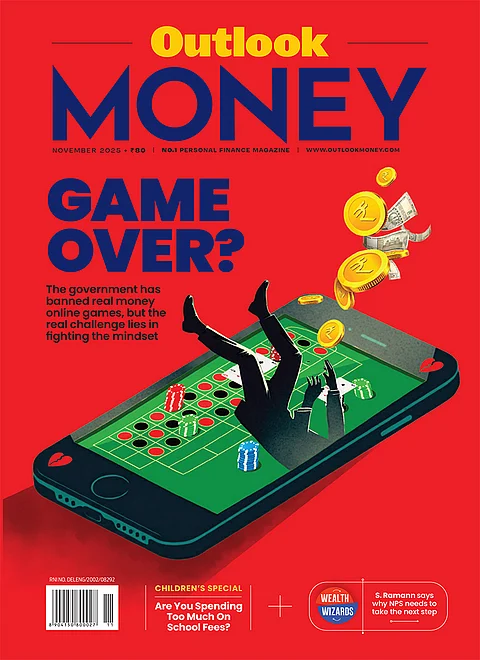The storm of defaults in debt funds that happened—since the collapse of IL&FS in September 2018 till the Yes Bank additional tier 1 perpetual bonds write-off in March 2020—was the worst in the history of India’s bond market.
While almost all debt mutual fund categories bore the brunt of defaults, the impact was highest in credit risk funds, as this category has the highest exposure to credit risk. Subsequently, there was a liquidity crisis in March-April 2020 due to uncertainties in the initial phase of the pandemic, which further shook the confidence of investors.
The once flourishing fund category of credit risk, which was popular prior to the spate of defaults, now has assets under management (AUM) of only Rs 26,000 crore, as of July 2022. This is against the debt funds AUM of Rs 12.5 lakh crore as on the end of July 2020 and an average of Rs 13.3 lakh crore as of July 2022. The loss of corpus in the credit risk category, since the time it used to be popular, is understandable.
Scratching The Surface
Investors’ confidence has been shaken, and it will take time to come back. Let us look at the rationale of investing in credit risk funds in the first place.
Earlier, when the category was popular, the attraction was higher portfolio accrual, leading to higher returns than other debt fund categories with better credit-quality portfolios. Even then, the counter-argument was that rather than aiming for slightly higher return in the debt component, why not go for the alpha (higher returns) in equity. The equity component of the portfolio has the capacity to generate palpably higher alpha over debt funds, compared to credit risk funds over debt funds. That argument is still valid.
Then why did people invest in this category? Firstly, one tries to maximise or optimize returns in whatever category they are investing in. In the debt component also, people wanted higher returns to the extent possible.
Secondly, while credit risk was always there, it did not hit people. It seemed to exist only on paper, somewhat like the warning on cigarette packets that smoking is injurious to health. Prior to 2015, certain defaults did happen in the mutual fund industry, which were absorbed by the asset management companies (AMCs). Though the risk is on the investors, the AMCs did it for the sake of goodwill.
The point is, till 2015, investors were not consciously aware of credit risk. Volatility was known and accepted, to a certain extent. But after the spate of defaults, people are mindful of credit risk. Now the realisation has dawned upon them, and investors are mindful and are avoiding this category.
Performance
The last five years of returns from this category includes the worst spate of defaults mentioned earlier. It would seem that, as a result, the returns over five years till date would be miniscule.
The annualised return till August 12, 2022, as an average of the category of credit risk funds, is 4.21 per cent in the regular plan and 4.96 per cent in the direct plan. This includes two funds that are still showing negative returns over five years. The numbers are not handsome, but not as bad as one would expect, after so many defaults and the liquidity issue of March-April 2020.
Over the last three years, it was 5.5 per cent in regular plan and 6.16 per cent in the direct plan. These are not bad, given that yield levels (interest rates) have moved up over the last three years.
Over the last 10 years—there are only a few funds that have a long history—the average annualised return of the category is 7.37 per cent in the regular plan.
What Now?
There are certain positive signs on the overall credit scenario of the economy. Credit rating agencies publish a metric called upgrade-downgrade ratio, which shows a comparison of credit rating upgrades and downgrades in a particular period. This metric is much better now than earlier.
Usually, during economic downturns, corporate defaults tend to slip. In 2020-21, when the economy faced a downturn, corporates did a commendable job of managing themselves. There have been no major defaults since March 2020. Whatever has hit the headlines are either old cases, where relevant authorities have taken action, or minor cases, which can happen any time. Corporates have reduced their debt levels in the pandemic phase, which has helped in servicing debt.
Conclusion
As mentioned earlier, the alpha or relatively higher returns over the usual debt fund categories can be generated through the equity component of the portfolio, provided you have adequate horizon.
In the debt component, whether you want to take that higher risk of credit risk funds is a function of your risk appetite. If you are not comfortable with the potential credit risk of a mixed portfolio comprising AAA, AA and A rated securities vis-à-vis another fund with a AAA oriented portfolio, you need not take that risk.
However, the reason for avoidance is not the defaults that happened earlier from September 2018 to March 2020. Those issues were due to the banking non-performing assets (NPA) clean-up drive launched by the authorities. That phase is over and the credit risk horizon has normalised now.
Not as an investment recommendation, but as a discussion point, the average returns from credit risk funds over the last one year, till August 12, has been 15.5 per cent in a regular plan and 15.94 per cent in a direct plan. This will not sustain as it is driven by recoveries in certain funds, of exposures written down earlier. But the worst days seem to be over.
The writer is a Corporate Trainer and Author







